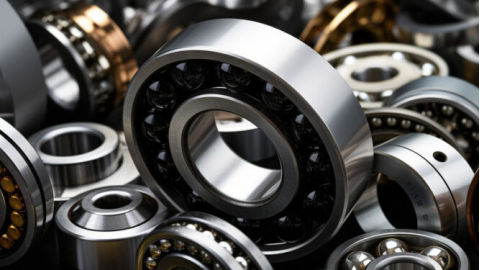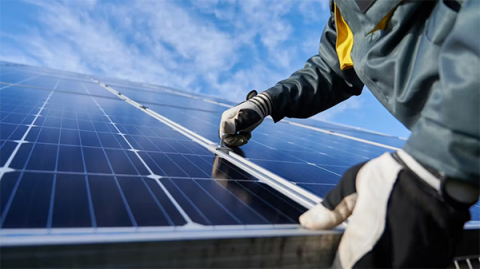Top 10 Fish Processing Equipment Manufacturers and Companies
Fish processing is a key industrial operation. It turns caught fish into consumer-ready products. This process includes cleaning, cutting, preserving, and packaging. It is vital for the global food supply chain. It ensures the safety, quality, and longer shelf life of seafood products. The demand for efficient and hygienic processing equipment is rising. This is due to the continuous growth in global seafood consumption. This article explores the leading manufacturers in the fish processing equipment market.

Market Overview and Industry Trends
The global fish processing equipment market shows significant growth. This growth is driven by rising seafood demand, advances in automation, and stricter food safety rules. Key trends include integrating automated systems. These systems reduce labor costs and boost efficiency. For example, robots are now used for precise cutting and sorting. Sustainability is a major focus. Manufacturers develop water-saving and energy-efficient systems to reduce environmental impact. IoT and data analytics monitor equipment performance in real-time. This helps predict maintenance needs and prevent downtime. Asia and Europe are the largest markets. They have high consumption rates and advanced facilities. Emerging economies are increasing their investments. Challenges include high upfront costs and the need for flexible equipment that handles diverse species.
Key Equipment Types and Technology
Fish processing involves various specialized machines. Heading and gutting machines use optical sensors and mechanical arms. They perform precise operations to reduce waste. Filleting machines use high-speed blades and computer vision. They make custom cuts based on the fish's size and shape. This ensures consistent product quality. Skinning machines work with abrasive rollers or blades. They adapt to different skin types, like salmon or cod. Grading systems sort fish by weight, size, or color. They use camera technology to optimize packaging and pricing. Packaging equipment includes vacuum sealers and labelers. They often integrate metal detectors and X-ray systems for safety. Freezing technology, like spiral freezers and IQF systems, preserves freshness. Cleaning-in-place (CIP) systems automate sanitation. They meet strict standards like HACCP and FDA rules.
Analysis of Top Manufacturers
Several companies lead the global fish processing equipment industry.
Marel from Iceland offers a complete line of processing systems. They are known for automatic heading machines and IQF freezers. They serve large-scale processing plants worldwide.
Baader from Germany specializes in high-efficiency sorting and filleting technology. They have over a century of experience and a strong market share.
Grieg Seafood in Norway integrates sustainable solutions into their equipment. This includes water-saving technologies for processing.
Triplewin from China provides cost-effective machinery. They focus on the needs of small and medium-sized enterprises.
Heat and Control in the United States excels in packaging and inspection systems. Their equipment enhances food safety protocols.
Skaginn 3X from Iceland is a leader in innovation. They develop advanced freezing solutions and robotic automation.
These companies invest heavily in research and development. Marel uses cloud-connected devices for real-time data analysis. Baader designs modular systems for easy customization. A strong global service network is a key differentiator. It ensures reliable maintenance and parts supply for customers.
Focus on Innovation and Sustainability
Manufacturers are driving innovation to meet industry challenges. AI-powered vision systems allow for more precise grading of fish products. This reduces errors and material waste. Energy-efficient equipment, like heat pump-assisted freezers, lowers carbon emissions. This supports global sustainability goals. Water recycling systems reuse up to 90% of water in cleaning processes. This addresses concerns about water scarcity. Many use recyclable materials in machine construction. This promotes a circular economy. Marel's water-saving gutting machines save millions of liters of water each year. Baader tests pilot projects using solar power. The use of bio-based lubricants and designs that need fewer chemicals minimizes environmental impact. These efforts help meet regulations. They also attract environmentally conscious customers.
Guide to Selection and Best Practices
Selecting the right fish processing equipment requires careful planning. Consider the specific species you process. Machines for shellfish are different from those for finfish. Calculate your capacity needs in tons per hour. This ensures the machine matches your production scale. evaluate the level of automation. Full automation suits high-volume factories. Semi-automatic systems may be better for smaller budgets. Hygiene is critical. Look for stainless steel construction and built-in CIP functions. This is essential for meeting food safety standards. Analyze the total cost of ownership. This includes the purchase price, maintenance, energy use, and training. Choose a supplier with a strong reputation and reliable after-sales service. This includes on-site support and available spare parts. Always request a equipment demonstration or pilot test before buying. Follow best practices like scheduled maintenance. Use digital tools for predictive maintenance to maximize efficiency and equipment life.




